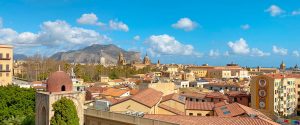If you have stumbled across our page, perhaps you might be considering Palermo, either as a future home or investment location. How can you be sure if Palermo is the right place for your needs and priorities? We can say one thing with certainty: if you want to immerse yourself in the most authentic Sicilian culture without surrendering the advantages of a city lifestyle, Palermo is the best place to start looking. And whether you need suggestions and local tips, or you’re ready to jump in and start a purchase, we would be delighted to be at your side.
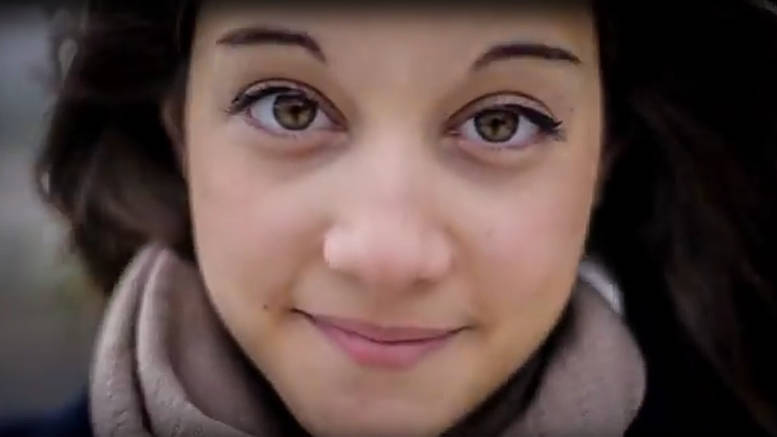
Perhaps you’ve already visited Palermo and been seduced by its heady mix of cultures and cuisines, ancient markets and chic boutiques, refined art and teeming night life. If so, you’ll know how hard it is to sum up such a complex city in a few paragraphs. For those of you who haven’t yet set foot in Sicily’s largest and most important city, we will try our best.
Palermo, let’s be clear is no Venice, Rome or Milan – cities which have preserved iconic and immobile images for centuries. You can think of Palermo somewhat like a snake, it changes its skin every year.
This is a city that has at once a little of Doctor Jekyll and a little of Mr Hyde, of velvet and steel, of black and white (although we should really say black and pink – the colors of Palermo’s soccer team: in Italy we say that there are three religions, and catholicism has to fight for status with food and calcio, or soccer). Palermo is both of the East and the West, of Africa and Europe. It is every culture and every people that has taken root on it’s fertile and beautiful land, malleable and welcoming like no other city in Italy.
We will begin at the beginning in a moment – but what skin is Palermo wearing right now? It’s one of arts (the Italian capital of culture in 2018), industry, nightlife and social movements. It is the focal point of the anti-Mafia movement and is, according to official statistics, the city with the lowest crime rate in Italy.
Keep scrolling discover the best insider tips that we hope will encourage you to start looking at flights. But first – that’s the present day. How did we get here?
Palermo’s Ancient Roots
The first settlement of note here was a Phoenician trading post as far back as the 8th century BC, when it was named ‘Ziz’ (‘flower’). Over the course of the following three millennia, this has always been territory coveted first and foremost as a port, with the perfect natural marina in the shelter of the three promontories (Gallo, Pellegrino and Catalfano) offering the perfect safe harbor in the very heart of the Mediterranean. Venturing inland, settlers discovered varied and flourishing flora and fauna, fertile soil and a natural gateway through which to govern the coveted triangular island.
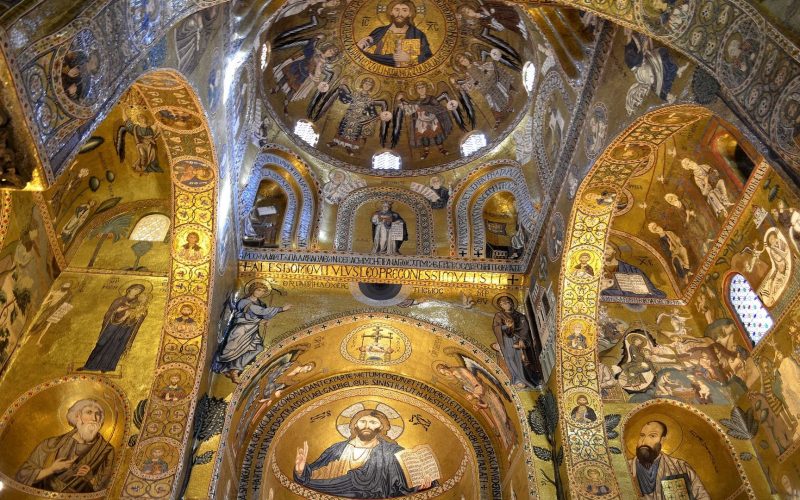
Greeks, Carthaginians, Romans and Byzantines succeeded each other in the area until 831 AD, when the island fell under Arabian rule, the name now becoming Balarm. The Arabs ruled here for almost two centuries, redesigning the urban layout, creating ingenious constructions such as the underground irrigation, glorious gardens and majestic buildings (it is said that at this stage the city was home to over 300 mosques). The Arabians made Palermo one of the largest commercial centers of their empire, and left a footprint still visible today, in the presence of the sprawling, souk-style markets of the old town (the Vucciria, Ballarò, and Capo) as well as in the city’s gastronomy and toponymy. Many visitors’ first impression of Palermo is feeling that you can move from Europe to the Middle East at the turn of a corner.
With the arrival of the Normans in 1072, Palermo’s course took a decisive change. Led by Roberto il Guiscardo (‘the Cunning’) and Ruggero d’Altavilla, the Norman conquerers broke the Arab rule and began a cultural and religious conversion of the city and Sicily. When Ruggero died he was succeeded by his son, Ruggero II, and under his leadership many of the city’s greatest monuments came to be built. But it was a gradual transition.
Whilst many mosques were indeed destroyed to make way for Catholic churches, the architecture of these was strongly influenced by previous Islamic constructions, and indeed some buildings were built in collaboration with Arabic craftsmen. This extraordinary stylistic fusion is now known as the Arab-Norman style and is completely unique to the province of Palermo. Among these we mention the Church of Santa Maria dell’Ammiraglio (known as ‘la Martorana’), the Cathedral, the Palazzo Reale and its Palatine Chapel, San Giovanni degli Eremiti, the Zisa, and venturing further afield, the cathedrals of Monreale and Cefalù. This collection of architectural treasures, well-preserved to this day, is now known as ‘the Arab-Norman route’ and has been a UNESCO World Heritage Site since 2015. As long as these monuments stand, Palermo will remain an almost fantastic city, suspended between East and West.
Palermo Stupor Mundi
It was under the thirteenth-century rule of Federico II of Swabia, grandson of Ruggero II and the last great ruler of the Altavilla and Hohenstaufen dynasties that Palermo truly rose to prominence as a great political and cultural center. Inheriting lands from modern Germany right down to the island of Sicily, Frederick led a crusade against Jerusalem, taking the city in 1225 and styling himself as its King. Born near Ancona in Italy, Federico showed favor to the peninsula and recognized the value of a strong base in Palermo.
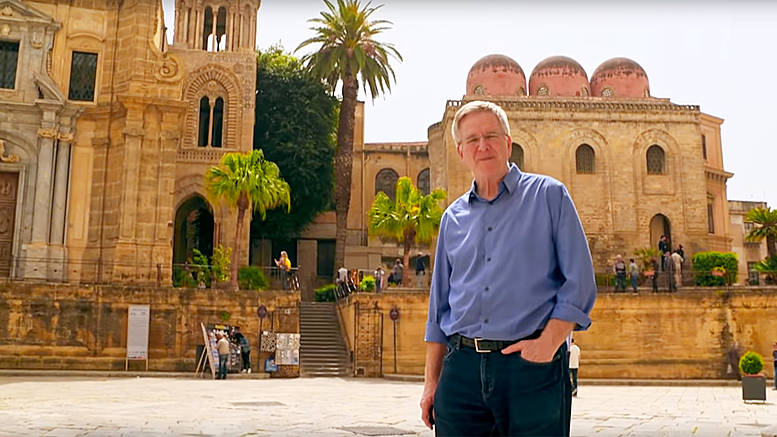
A cultured and refined sovereign, renowned for a policy aimed at unifying lands and peoples, Federico II was given the moniker of ‘Stupor Mundi’ (‘wonder of the world‘) and under his reign Palermo became the political and cultural capital of his kingdom. Here the monarch surrounded himself with first-rate intellectuals, artists and philosophers and promoted the formation of the Sicilian poetic school. History has sometimes forgotten that the first true national literary language in what is now Italy (well before the Tuscan) was the Sicilian dialect, with artists of the caliber of Giacomo da Lentini (credited with inventing the sonnet) and Ciullo d’Alcamo forerunners of the movement.
From Altavilla to Florio
With the disappearance of the Hohenstaufen line after Federico, the standing of Norman Palermo declined rapidly as their brethren to the North of Europe lost territory in France to English insurgence and in 1282 the famous ‘Vespers revolt’ saw Palermo taken from French rule by the native Sicilians.
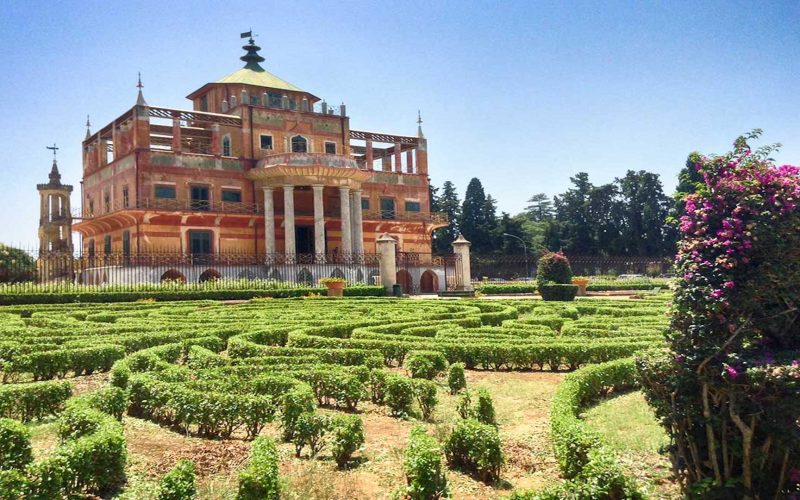
From the fourteenth century onwards, Sicily and Palermo passed through Aragonese and then Spanish rule (to which we owe the construction of via Maqueda and the Quattro Canti junction). This lasted until the eighteenth century and the arrival of the Bourbons of Naples who filled the city with baroque palaces.
The nineteenth century brought the emergence of a new mercantile bourgeoisie within the city, the rise of prominent families like the Florios, and the celebration of architects such as Ernesto Basile. The Viale della Libertà (Libertà being the Italian term for Art Nouveau) was constructed and numerous villas were built in this new style. This period saw Palermo develop architecturally to rival any other major European cities, included the likes of Milan and Turin, where the legacy of movement is still on open display. However, it was to be a farewell to Palermo as a significant powerhouse, and the city fell into a stasis which lasted until almost the end of the twentieth century. An ill-advised construction boom in the 1960s sadly removed many of the great Liberty Villas, although some beautiful examples did escape, like the Villino Florio and Basile’s Headquarters of the Assicurazioni Generali Venezia Insurance Company.
Palermo Today
The much-loved Palermitano author Roberto Alajmo once wrote that “Palermo is an onion”: before reaching its heart one must peel away many layers, and it is practically impossible to do so without shedding a few tears. Understanding Palermo is a process that takes time, patience and an emotional investment free from prejudice. But this is an investment that pays rich dividends.
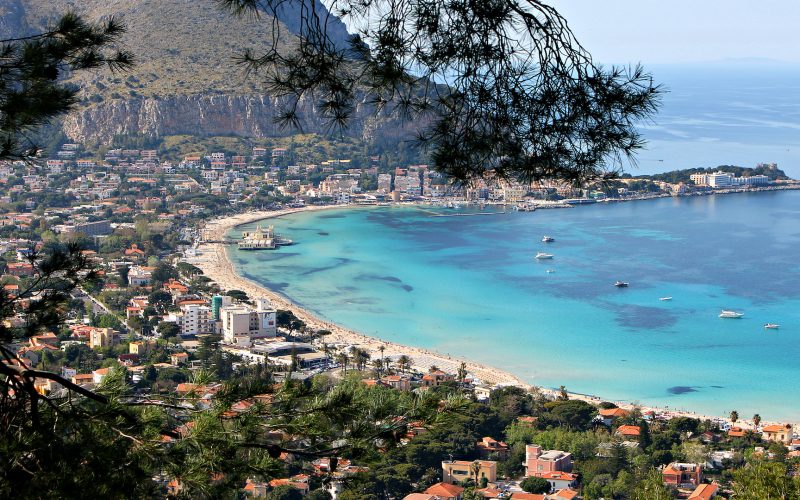
The Historic Center
Unlike cities like Rome and Florence, the treasures of Palermo are not always unmissable, their path marked out in the footprints of a never-ending throng of tourists. Instead these gems will take you by surprise as you wander the twisting back streets of one of Europe’s largest Old Towns, territory in which it can take a few days to get any kind of bearings.
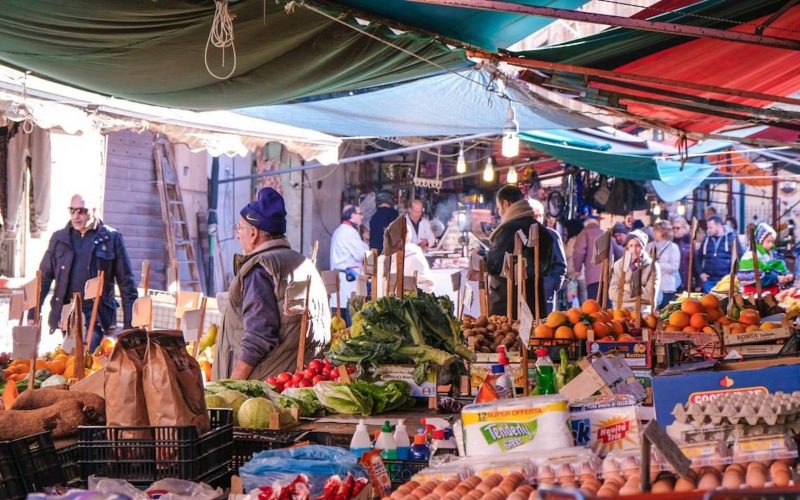
In contrast to many cities, some of the most popular and noisy are found right in the in the heart of the ‘Centro Storico‘. The Ballarò, Vucciria and Capo markets within three of the four large blocks that make up the old town, which meet at the famous intersection of the Quattro Canti (Piazza Villena). The historic markets are still the beating heart of Palermo: by day, with stalls piled high with freshly caught fish, meats, vegetables and seasonal fruit, street food and goods of all shapes and sizes… and especially by night, when their numerous bars, restaurants and taverns welcome locals and travelers of all ages to socialize, party and dine – a good meal here can be had for under ten euros!
This is Palermo in it’s purest form and is not to be missed. Around every corner a street full of lively bars or a piazza with elegant cafes; music and delicious smells filling the air everywhere. If you dream of the Mediterranean lifestyle at once languid and teeming with life, Palermo is the perfect place.
Here are some of our top local tips on things to see and do in each of the center’s four historic districts.
L’Albergheria
In this neighborhood, home to the Royal Palace and the Ballarò market, we highly recommend a visit to the wonderful Chiesa del Gesù, a great example of Baroque architecture in Palermo. The church was destroyed by a bombing raid in 1943 and reopened only in 2009 after an epic restoration effort. We defy you not to be amazed by the intricate craftsmanship – every inch is a treasure, we swear it.
After feeding the soul, we recommend feeding the body – a few meters from the church is the excellent Moltivolti. This place is a not-for-profit cultural center, run collaboratively by Italians and immigrants and perfectly reflects the welcoming and tasty essence of Palermo.
Il Capo
The vibrant Capo market is a must-see attraction in Palermo. Frequented mostly by locals and therefore less ‘touristy’ but with a history and folklore every bit as rich as the Ballarò. It is also known as the market of churches, with several places of worship found alongside the stalls, including the Chiesa dell’Immacolata Concezione. If you find yourself here in the warmer months, try refreshing with a glass of fresh pomegranate juice – a shot of energy and vitamin C!
La Loggia
In this district, traversed by Via Cavour and Via Roma, the Archaeological museum ‘Antonino Salinas’ is not to be missed, filled with artifacts and relics of all the peoples who once populated the island.
We also advise you to try the aperitivo at the Taverna Azzurra in the Vucciria market. You will always find a buzzing mix of students, artists and foreigners who love to meet and shoot the breeze over a glass of Sangue (not actual ‘blood’ but a popular red wine!) or a chilled bottle of Forst (Palermo’s favourite beer).
Music and theater lovers should always keep an eye on the program of events at both Castello a Mare and the Teatro Biondo.
La Kalsa
This neighborhood holds three of Palermo’s most symbolic places. In Piazza Marina, go and visit the Giardino Garibaldi (an ornamental garden with the largest tree in Europe!). Every Sunday morning you can lose yourself in a fabulous flea market in this beautiful spot books, records, vintage clothing and bric-a-brac of all kinds abound.
You can also savor Palermo’s legendary street food specialties at Franco u Vastiddaru or at Antica Focacceria San Francesco, two must-visit local eateries.
The third is, the Chiesa dello Spasimo is an unfinished church founded under Spanish rule, which remains open to the elements. The structure has a long and storied history and is today host to a top quality program of jazz concerts and classical music.
Lastly, for all your evening revelry needs, the Kalsa offers a plethora of options between Piazza Sant’Anna, Piazza Revolution, or Piazza Magione.
An Ever-Changing City
Diversity and contrasts, as we’ve explained, have always been the essence of Palermo. With one eye always on its past steeped in tradition and the other on a present day of economic and social boom, Palermo is rapidly modernizing and the past two decades have brought significant public and private investment. It could perhaps be compared to Bilbao in Spain, Liverpool in England or Pittsburgh in the USA, cities once considered unfashionable but now reaping the benefits of cultural and economic regeneration. It is a city on the up.
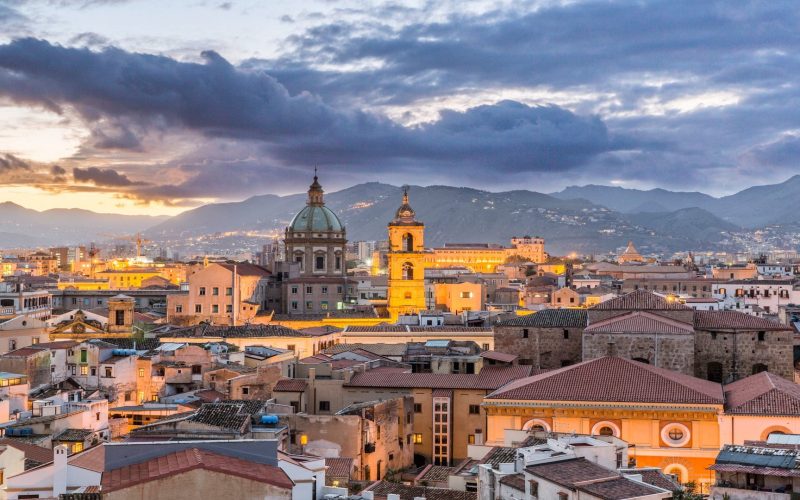
Thanks to green policies in the historic center, for example, Palermo has created large pedestrian areas along some of the city’s most beautiful and historic streets, such as Via Maqueda and Corso Vittorio Emanuele. These now throng with bistros and delicatessens, tempting cafes and stylish boutiques of clothing and crafts.
Palermo is the economic powerhouse of the region and one of the most important in the south of Italy. Its economy is based on shipbuilding, iron and steel, food production and agricultural trade, but a growing sector is tourism. The city has an international airport (Falcone e Borsellino) a short drive, train or bus ride from from the center, with connections to all of the continent’s major hubs. There are also direct train and bus routes to all of Sicily’s the main points of interest and to all major cities on the island (Catania, Agrigento, Cefalù, Messina, Siracusa, etc.) with constant departures from the ‘Centrale’ Station.
As well as a metro line (which extends to the airport at Punta Raisi), the administration has expended bus routes and invested in the construction of a tram network that already connects the center to its suburbs, including the huge Forum shopping center in Brancaccio, and is still expanding.
One undisputed advantage: Palermo is undoubtedly one of the cheapest cities in Italy – whether you arrive from the north of the country you will be shocked at how cheap things are. You can eat well in a restaurant for 10-15€, and if your wallet is even lighter, you can find street food sandwiches for under 2€, try the local specialty of brioche filled with ice cream (maybe 2.50€) or cool off with a beer in the Vucciria for 1.50€. In the morning a cappuccino and croissant at your local cafe will probably give you change from 2€.
The University of Palermo is among Italy’s most popular and cheapest, and offers a full program of study. Hundreds of foreign students enroll every year, and hundreds more take courses here through the Erasmus exchange scheme (mostly from Spain, France and Germany).
Art and Culture
In addition to architectural and culinary assets, Palermo offers a rich year-round calendar of arts events. The Teatro Massimo is one of the largest opera houses in Europe, and rivaled in beauty by the Politeama, home of the world class Sicilian Symphony Orchestra. The city was the capital of Italian culture in 2018, when it also hosted the biennial art festival Manifesta.
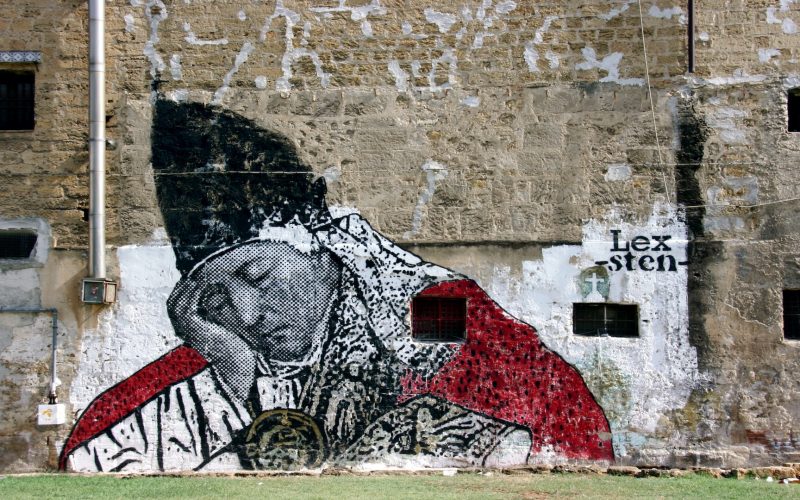
To discover the most hidden beauties and unseen heritage of the city, the Week of Cultures is organized in May, and in October the perennial Vie dei Tesori (‘Road of Treasures’) festival takes place, with incredible spaces usually closed off from the public available to visit. Lovers of literature should visit Una Marina di Libri and film fans will be interested in the Eurovision Palermo Film Festival and the Sicilian Queer Filmfest.
Pros and Cons of Life in Palermo
How to sum up such a city? We can start by giving it our unqualified recommendation. It is our own home province and we are always proud to encourage visitors and new neighbors. We also think it is a good option for investment in Sicily – a city going from strength to strength. You will find yourself surrounded by beautiful monuments, great food and all the amenities of a big city, at a bargain cost of living. The weekend break market is burgeoning and offers business opportunities for an investor, and the welcoming locals guarantee a very high quality of life for new residents.
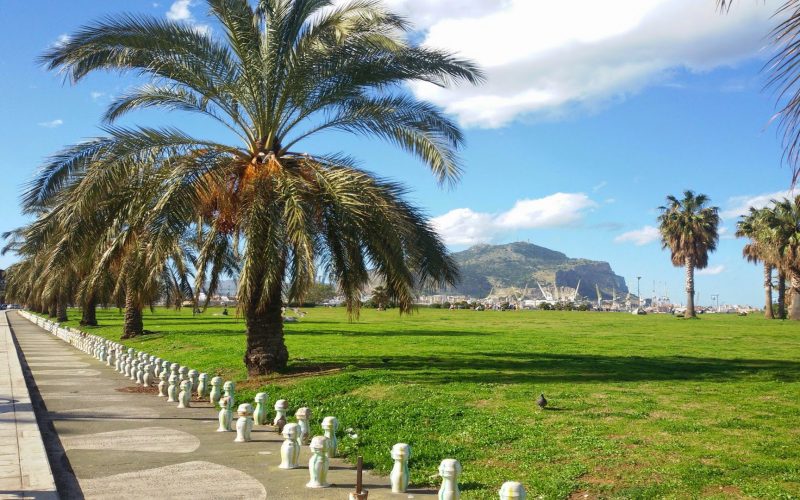
Obviously, we want to be candid about the city’s drawbacks too: Palermo is an extremely lively city, so you will have to expect certain neighborhoods to be thronged and chaotic, especially at weekends. Traffic can be heavy around the districts not built for motor vehicles, the one way system takes a lot of getting used to and the drivers here aren’t known for their fastidious attention to the Highway Code. But these aspects, needless to say, are common to all the major cities of Italy. The laid-back Sicilian lifestyle always somehow manages to mitigate stress and make the background noise fade far away!
For us, then, the pros far outweigh the cons.
Where to Buy Property in Palermo
As you will be coming to understand, the beating heart of Palermo is its huge historic center. When looking at property, keep the Quattro Canti junction as a reference point: the closer you are to this, the luckier you can consider yourself! Among the four neighborhoods we mentioned, Kalsa is the most sought-after, and therefore also the highest priced. The districts of Ballarò and Vucciria have been greatly regenerated in recent years, so property here may prove a savvy investment. They also benefit from proximity to Via Maqueda, a pedestrian street full of cool hangouts, the Teatro Massimo, the city’s Cathedral and ‘Centrale’ Train Station.
Real estate in the historic old town costs on average around 1700€/m2. Outside the center prices will vary by district from around 1300€ up to a maximum of about 2000€/m2.
Have a look on the page describing our services, you will find interesting informations.

